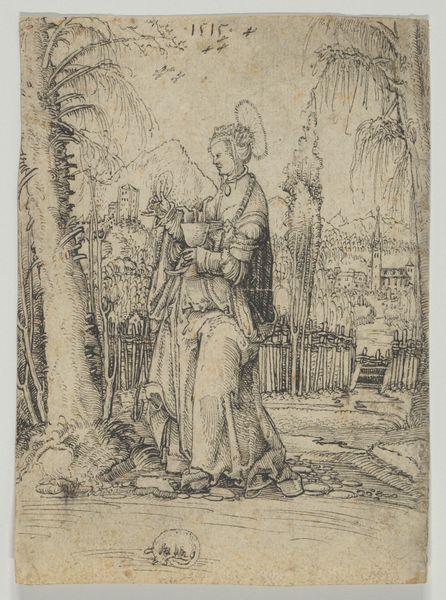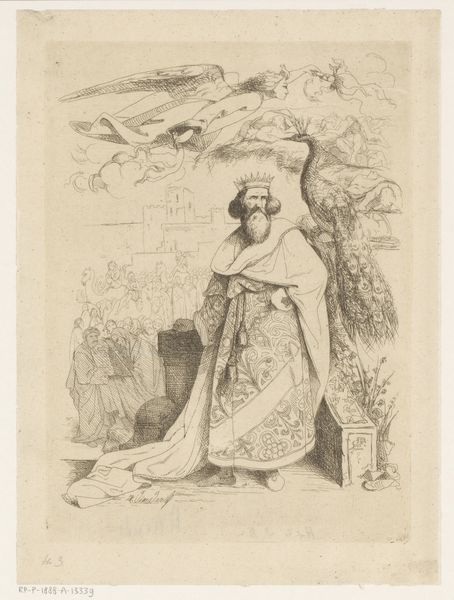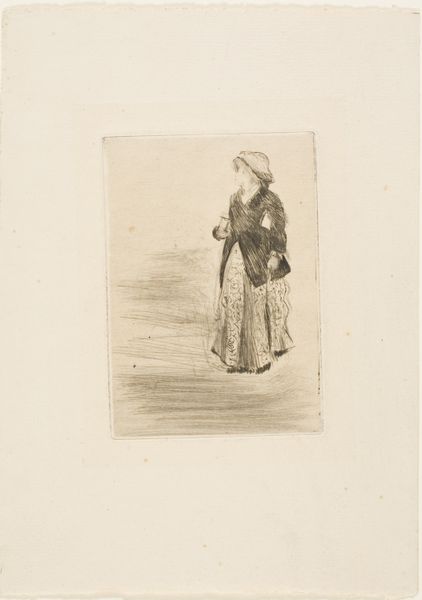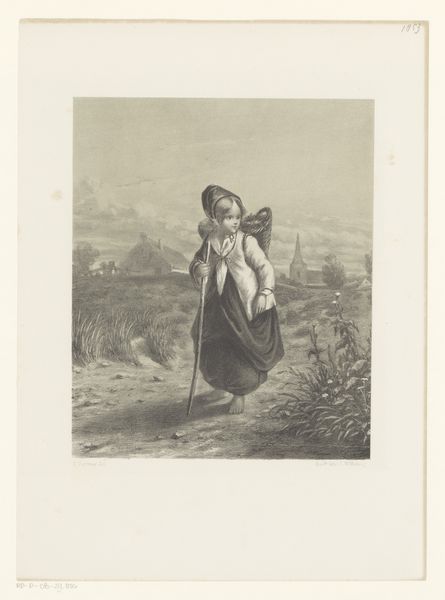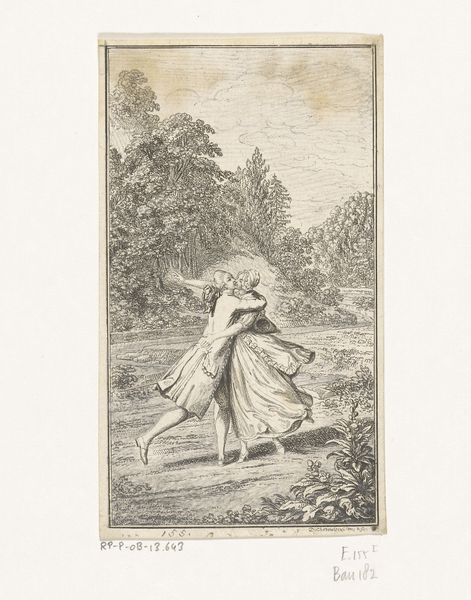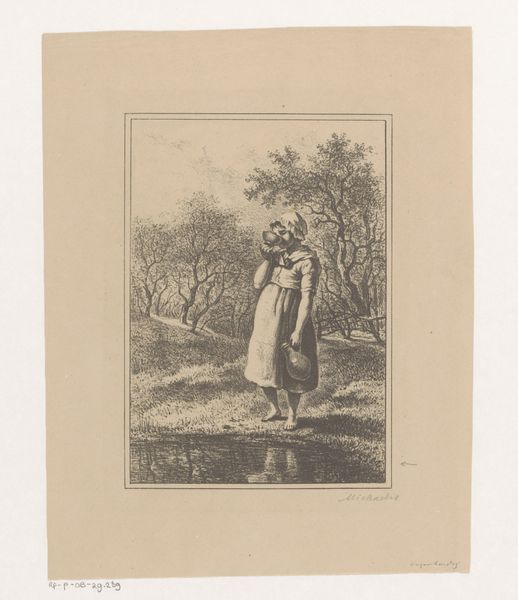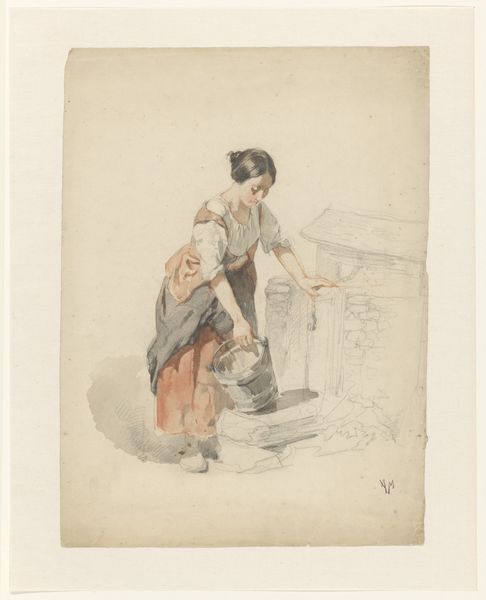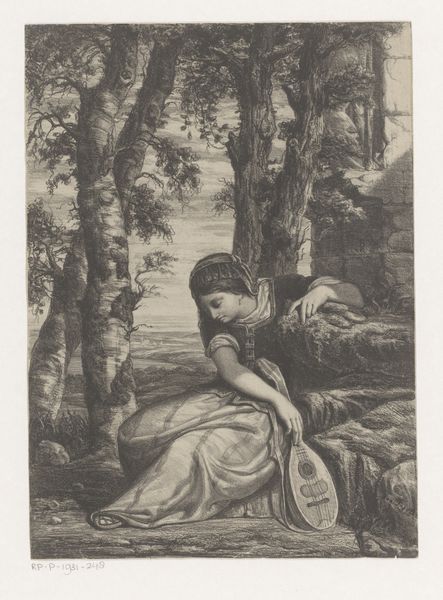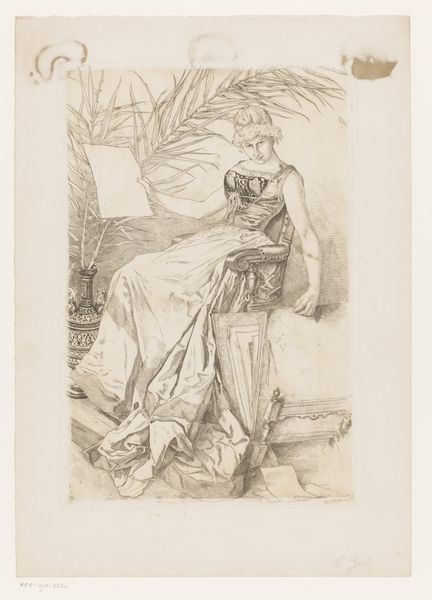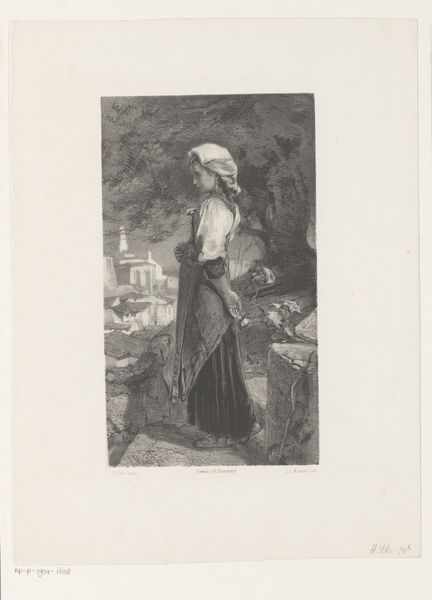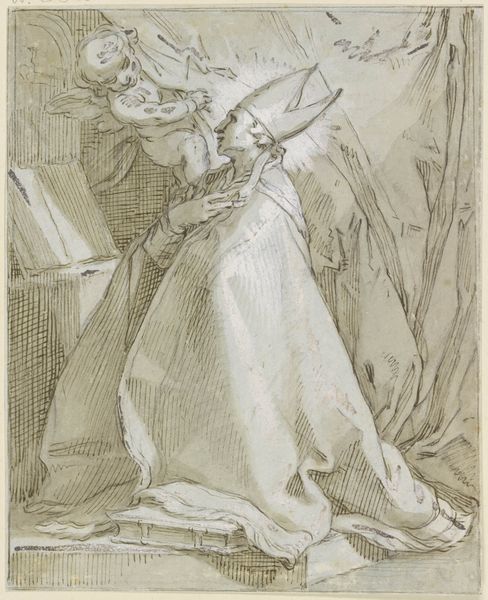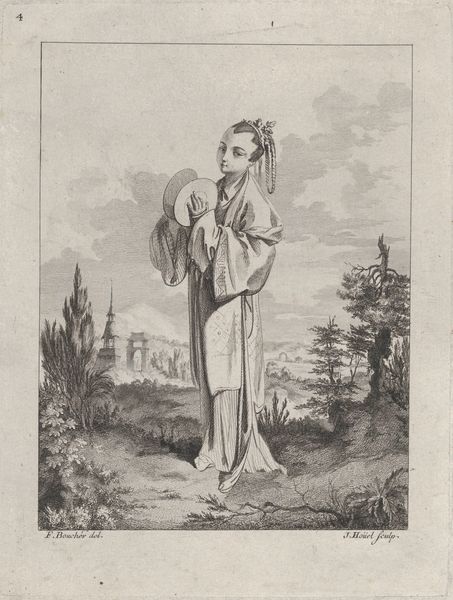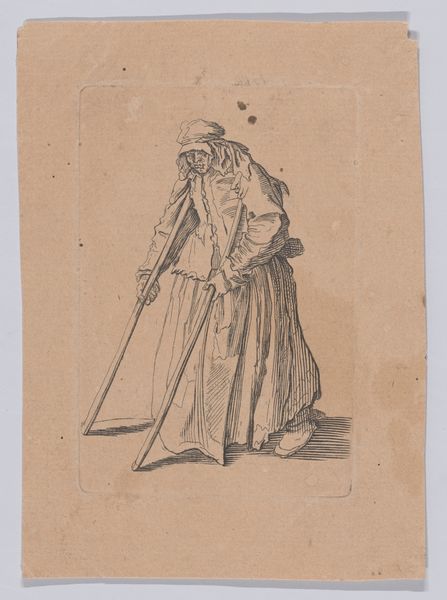
aquatint, print, gouache, etching, intaglio, mezzotint
#
portrait
#
aquatint
#
water colours
# print
#
gouache
#
etching
#
intaglio
#
coloured pencil
#
mezzotint
#
genre-painting
#
rococo
Dimensions: 14 x 10 in. (35.56 x 25.4 cm) (plate)
Copyright: Public Domain
Curator: Here we have “June,” an aquatint, etching, and mezzotint by Robert Dighton, created in the late 18th century. It’s a striking example of the Rococo style, now residing here at the Minneapolis Institute of Art. Editor: Immediately, I’m struck by the contrast. The figure, elegantly dressed, is juxtaposed with the laborers in the background, and a rather clunky contraption at the foreground. It's an interesting visual statement. Curator: Dighton’s prints, often portraits or genre scenes like this one, circulated widely. They offer glimpses into the social fabric of the time, revealing attitudes and power dynamics. The print medium itself facilitated wider accessibility, influencing public perception and taste. Editor: Yes, the contrast you point out raises important questions about labor and leisure. "June" presents a figure of privilege alongside an idealized scene of rural work, but doesn't directly engage with their relationship. Is it commentary or just detached observation? The class divisions within it are hard to ignore. Curator: That's an incisive question. Dighton himself was something of a character—a caricaturist known for his wit and social commentary, but his work often seems to reflect the establishment views of his era. How does it engage with ideas about femininity and societal roles, do you think? Editor: That elaborate dress, coupled with that wistful expression, presents an almost suffocating image of prescribed femininity. It feels like the subject is physically weighed down by expectations. What about you, what does this composition say to you? Curator: Considering Dighton's broader output, I am led to believe the artist had intentions of social satire, portraying a woman detached from any real labor despite the bucolic scenery, is thought provoking to say the least. The title itself also feels satirical, using June—a month typically connected with labor or celebration to show something totally devoid of it. Editor: Well, regardless of authorial intent, its enduring resonance lies in its capacity to ignite conversations about class, labor, and representation. It's always valuable to revisit how art reflects and potentially perpetuates, prevailing societal ideologies. Curator: I appreciate how you draw those connections, looking at the impact regardless of initial intent. It gives us a much richer understanding of the past. Editor: Indeed. It reminds us that art's meaning evolves within social and political contexts that affect the society.
Comments
No comments
Be the first to comment and join the conversation on the ultimate creative platform.
